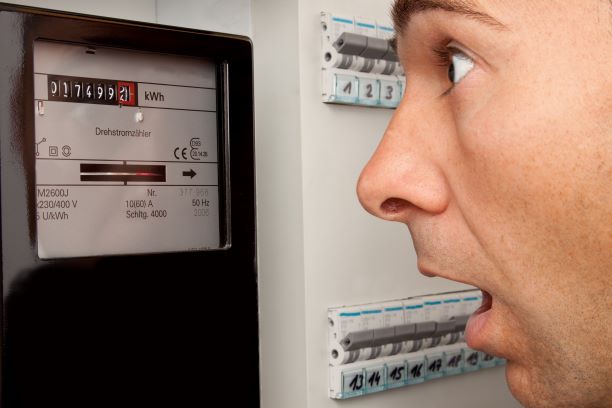The energy market has hundreds of tariffs to choose from. However, it isn’t always easy to understand which is the right choice. Many energy suppliers have unique names for their tariffs which can lead to some confusion amongst consumers. However, these will normally fall into two main categories; fixed rate and variable rate.
Before deciding what tariff is best for your individual circumstances, you’ll want to understand the difference between fixed rate and variable rate energy tariffs. We hope to provide all the essential details in this guide. To ensure you get the best deal, we recommend using an online price comparison site such as Utility Saving Expert to compare the best gas and electricity suppliers.
Unit rates
Knowing how energy usage is charged will better help you understand how fixed rate and variable rate energy tariffs are calculated. Simply put, energy usage is measured in kilowatt hours, usually abbreviated as kWh. This equates to one kilowatt of power being expended for each hour. When discussing home energy bills, it will normally be referred to as a ‘unit’.
All domestic energy providers state prices as pence per kilowatt-hour (p/kWh). This will be the cost of each unit rate. Units for both gas and electricity are charged differently as they are not the same. Most energy suppliers will also have a daily standing charge for gas and electricity. Depending on which region of the country you live in, this figure will be different.
Fixed rate tariff
On a fixed rate tariff, your unit rate will remain the same for the duration of your contract. Normally, this will be between 12 months to 24 months. However, it’s important to know that this does not mean your actual bill will be the same each month. This is just for the unit price, not the total sum. The amount you pay will be determined by multiplying your energy usage by the unit rate. This means that the more power you consume, the higher your bill will be.
Variable rate tariff
On a variable rate tariff, the unit price you’re charged for gas and electricity can differ and be changed by your energy supplier for the duration of your contract. This will be in line with wholesale market prices. For example, if wholesale prices increase, so will your unit rate, if they decrease, you’ll pay less. It is important to note that the wholesale cost of energy may not directly correlate to your unit rate. Energy providers have the option to alter the price. If your provider does intend to increase prices, you should receive notification of this.
Capped tariffs
Some gas and electric providers offer customers capped tariffs. Generally speaking, this is a combination of both a variable rate and fixed rate tariff. In essence, they are actually variable rate tariffs but there is a guarantee that your unit price will not go above a certain limit. Before you do select this type of plan, make sure you read the terms and conditions.
Capped tariffs allow you to benefit from falling energy prices without having to worry about the unit price increasing exponentially. Although, they are not usually the cheapest option. If you do decide to terminate your contract, you will also have to pay an exit fee.
What about standard variable rate tariffs
Most energy providers will have a standard variable rate (SVT). This is the firm’s basic plan and usually the default option.
Any customer who is moving home, and has their electricity and gas supplied by the previous tenant’s provider will usually be placed onto a standard variable tariff. Also, customers that are on a fixed rate deal which is due to expire will be placed on an SVT once the contract ends, unless they switch to a new deal or supplier. If by now you haven’t switched suppliers, you’re likely on a standard variable rate tariff.
Normally, a standard variable tariff tends to be an energy supplier’s most expensive option. Your unit price will also increase if the provider increases the rate. If you are on an SVT, it’s highly recommended that you compare and switch to a better deal as soon as possible.
What option is right for me?
When selecting a new tariff, you may be attracted to a number of variable rate options as these are often cheaper. However, this might not always be the case as prices could rise. If wholesale market prices rise significantly, consider looking for an alternative.
Anyone who is on a standard variable-rate tariff (SVT) should switch as soon as possible. You’re likely being charged a lot more than you could be paying on a cheaper contract.
Fixed rate tariffs do offer some peace of mind as you don’t have to worry about wholesale market fluctuations. Normally, they can be cheaper too. One drawback to these would be missing out on a cheaper deal and the exit fees that are applicable.
In summary, both tariffs have their own advantages and disadvantages. Ultimately, you want to avoid SVTs at all costs.




